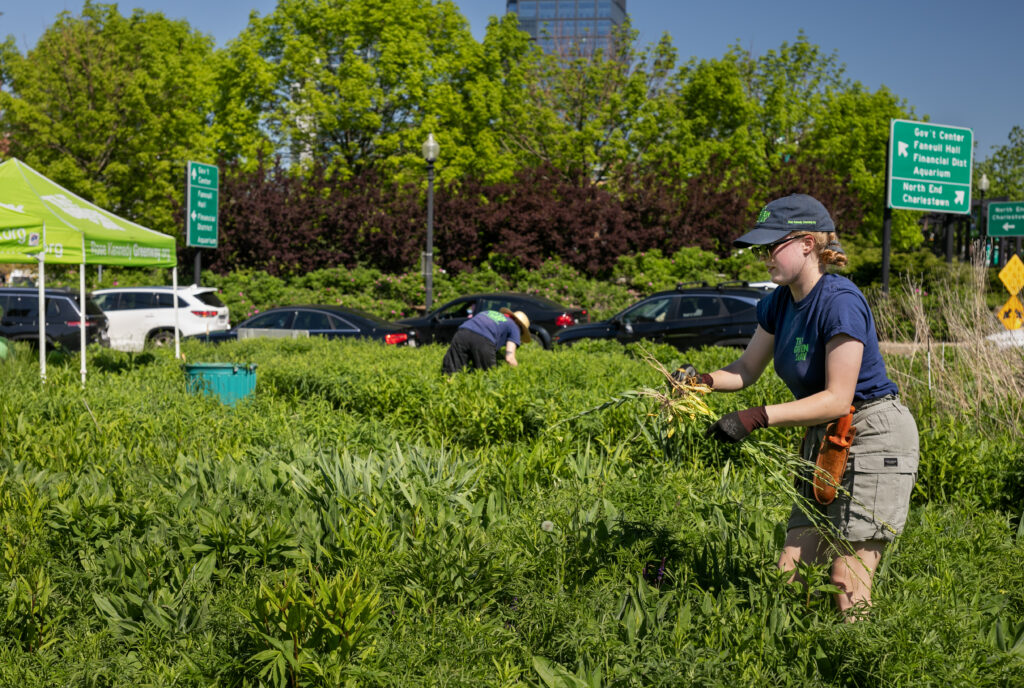
Hi! My name is Amy Monsen and I have had an excellent experience as the Horticultural Intern for the Rose Kennedy Greenway Conservancy.
As someone who grew up in the suburbs of Minneapolis, Minnesota and who goes to college at the University of Oklahoma in Norman, a college town, public city horticulture has not been something I have had a lot of exposure to. Working at The Greenway has opened my eyes to the beauty and essential services that public green spaces provide. I have learned countless gardening skills from the Horticulture Team and key lessons from the other departments at the Conservancy.
The Greenway is unique in that it follows the path of essential streets in the heart of Boston. It connects many communities from the North End to Downtown to the Waterfront to Chinatown. There is incredible volume and diversity in the people who visit The Greenway. It is super cool to meet these people and hear their stories – especially those who have lived in the city long enough to remember when the elevated highway used to be where The Greenway is now. The amount of people who pass by us working and say “thank you” or some other kind comment is truly astounding and reminds me why accessible green spaces are so important to our ever urbanizing world.

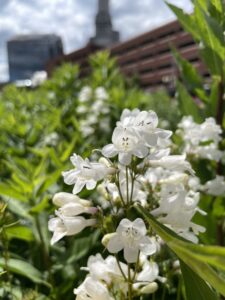
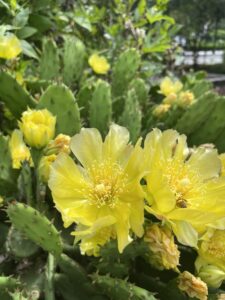
Working with The Greenway volunteers showed me that connecting people to nature also connects people to community. The volunteers that I worked with all over the park brought incredible skills, dedication, stories, and viewpoints. I am generally a socially anxious person, but every time I talked with a volunteer, whether one of our regular Greenway volunteers or a volunteer from a corporate group, I felt that what we do here at The Greenway really does make a positive impact to the people around us – that they feel welcomed by the team and encouraged to come back was always my main goal!
Experiencing the works of artists along The Greenway is similarly important. For me, part of public horticulture is making sure the people who go to The Greenway feel represented. Having art along The Greenway from a wide range of artists is a great way to do that. I also saw some of the behind the scenes with the Public Art department of The Greenway – learning what they do and everything they have to coordinate gave me a greater appreciation for what it takes to bring art to a park.
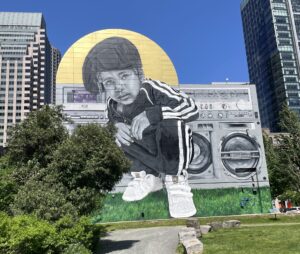
(Rob “ProBlak” Gibbs. (2022). Breathe Life Together. Dewey Square)
This summer, the Horticulture Team worked on a number of different projects. First up was new plantings by India Street near Rowes Wharf. This was one of the first things I did with the team, and I began to understand and learn more about how horticulture works as a whole and on The Greenway specifically. This is where I first fully realized that the soil we were working on is not very deep at all. Because of the Big Dig and the tunnels underneath the ground, all of The Greenway has limited depth for its soil. This was an interesting aspect of city parks that I had never considered! It is very different from gardening anywhere else, where roots can go as deep as they need to and can reach the water table. This is why it is so important that our irrigation works (which we have had trouble with this season)!
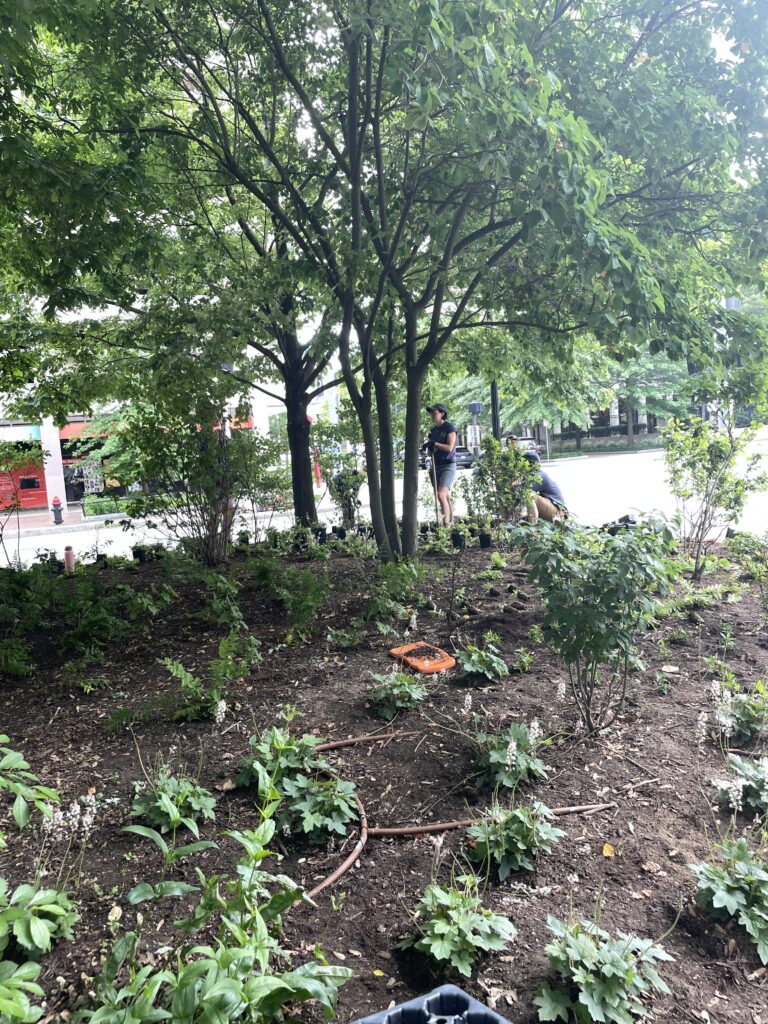
(Planting in the Wharf District)
The next big project was supporting the organization’s biggest fundraising and networking events: Gala on The Greenway and Glow in the Park. I worked closely with Darrah, our Senior Horticulturist and Designer, and several volunteers to prepare small containers and boxes filled with plants as decorations for inside the tent. Container planting and decorations is a completely different type of horticulture than planting in the ground, and it was fun to explore my more creative side in arranging cut flowers and mosses. The constraint of the theme, which was a woodsy forest floor vibe, helped to direct that creative focus.

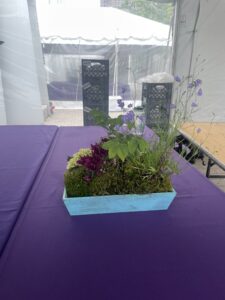
(Two container decorations with cut flowers and plants for Gala on The Greenway and Glow in the Park)
Our longest planting project of the year was just south of High Street. This was a large-scale project with 738 perennial plants in total. It was really cool to see the space go from trees and just a few bulbs and shrubs to completely decked out with perennials. I also got some practice with Darrah in laying plants out before they were put into the ground to get a feel for the spacing and design of each plot – another example of combining aesthetics and botany. Mulching these beds was a momentous undertaking of its own, and I gained a deeper respect for my team’s passion and hardworking spirits.
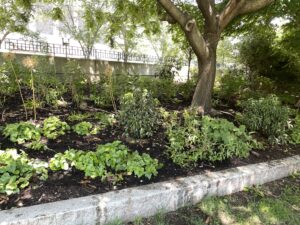
(Plantings in the main west bed)
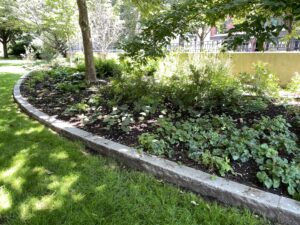
(Plantings in the main east bed)

(Waldstenia, laid out before planting)
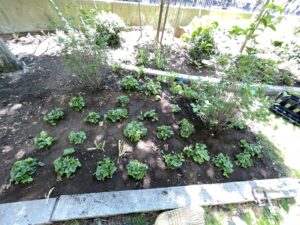
(Waldsteinia, planted in the ground)
One of my favorite topics to talk about, both in my studies as a Plant Biology major and also practically on The Greenway, is ecology. Of course, since this park is in a city and manufactured on top of tunnels, there are really interesting dynamics and I’m glad to see we have so much diversity in animals – birds, butterflies, squirrels, etc – as well as in plants. The area with the Wildflower Meadow (pictured below) is one of my favorites on The Greenway because it provides essential habitat and food for pollinators (and reminds me of the prairie ecosystems I study at the University of Oklahoma). Learning about ecology on The Greenway from Val Stiles, our Ecology Health Care Horticulturist, is fascinating. She’s working on a new project just south of the Carousel that demonstrates a year-round approach to ecology and showed me how what I learn at college can be applied to the real world.
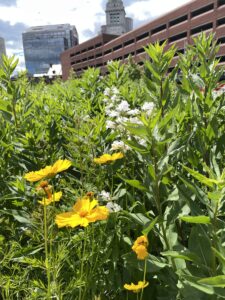
(Wildflower Meadow in the North End)
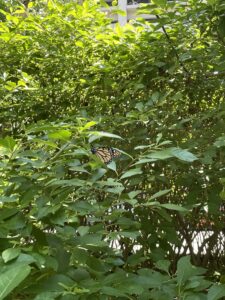
(Monarch butterfly I spotted in the Wharf District)
The fact that the Greenway Conservancy uses exclusively organic practices to maintain the gardens stuck out to me both when I was applying for this internship and over the course of the summer as I saw that in action. Part of what I want to do in my life and career is protect and conserve our world and its people. While not all chemicals are harmful to the environment or people, having an organic practice ensures that areas are safe for children, animals, and the plants that visit and live there. The Greenway Conservancy’s commitment to organic care of the park is exemplary. While this type of management does require a lot of manual weed pulling, that’s fine by me. As Liam, one of the Seasonal Horticulturists, often says, weeds are “job security.”
A fun trip I got to do this summer was visiting Cavicchio Greenhouses with Darrah and picking out plants from their massive selection. I had never been to a big wholesale greenhouse before, so it was all new to me. We picked out plants from the shrub and tree section, the greenhouse area, the shade perennial section, and the sun perennial section. Watching Darrah go through her list, decide between all the different varieties of plants, analyze bloom cycles, and think through replacement plants for ones we wanted that weren’t available showed me more insight into what her job is like as well as how much work goes into deciding what gets planted into The Greenway all year!
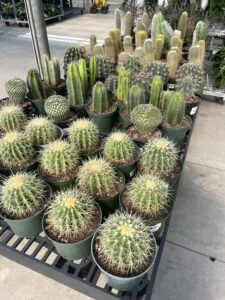
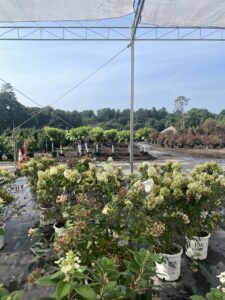
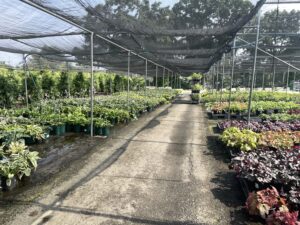
(Images from Cavicchio Greenhouses)
Another aspect of professional gardening that I got a taste of is the different styles of gardens that exist throughout the park. Growing to understand the more formal gardens of the North End and Chinatown versus the more ecological approach to the Wharf District and Fort Point – and how those gardens relate to the surrounding communities and cultures – was something I had never contemplated before. The extra detail put into the more formal gardens was really fun for me. I am a detail-oriented person, and pruning specific branches or removing small unflattering items appealed to that side of me. At the same time, walking through the Wharf District is very rewarding since there are a lot of native plants there, and realizing that these plants didn’t need the same level of care because they were adapted to the Boston environment was exciting to see in action.
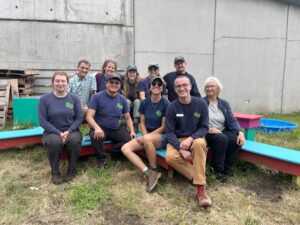
(The 2024 Horticulture Team)
From the very beginning to the very end, this internship has given me exactly what I wanted and more. I got my hands dirty and planted, watered, and pruned countless plants, weeded and mulched numerous beds, and experienced the daily ins and outs of working in a public horticulture setting. Of course, none of what I have learned from this internship would have been possible without the invaluable knowledge and teaching of the rest of the Horticulture Team. The biggest thanks and props to Tori, Teresa, Sam, Val, Liam, Eric, Nate, Darrah, and Brian, the best team out there. <3
Summer workforce development opportunities on The Greenway are made possible through the generosity of Citizens.



